
100 Clapping Machines
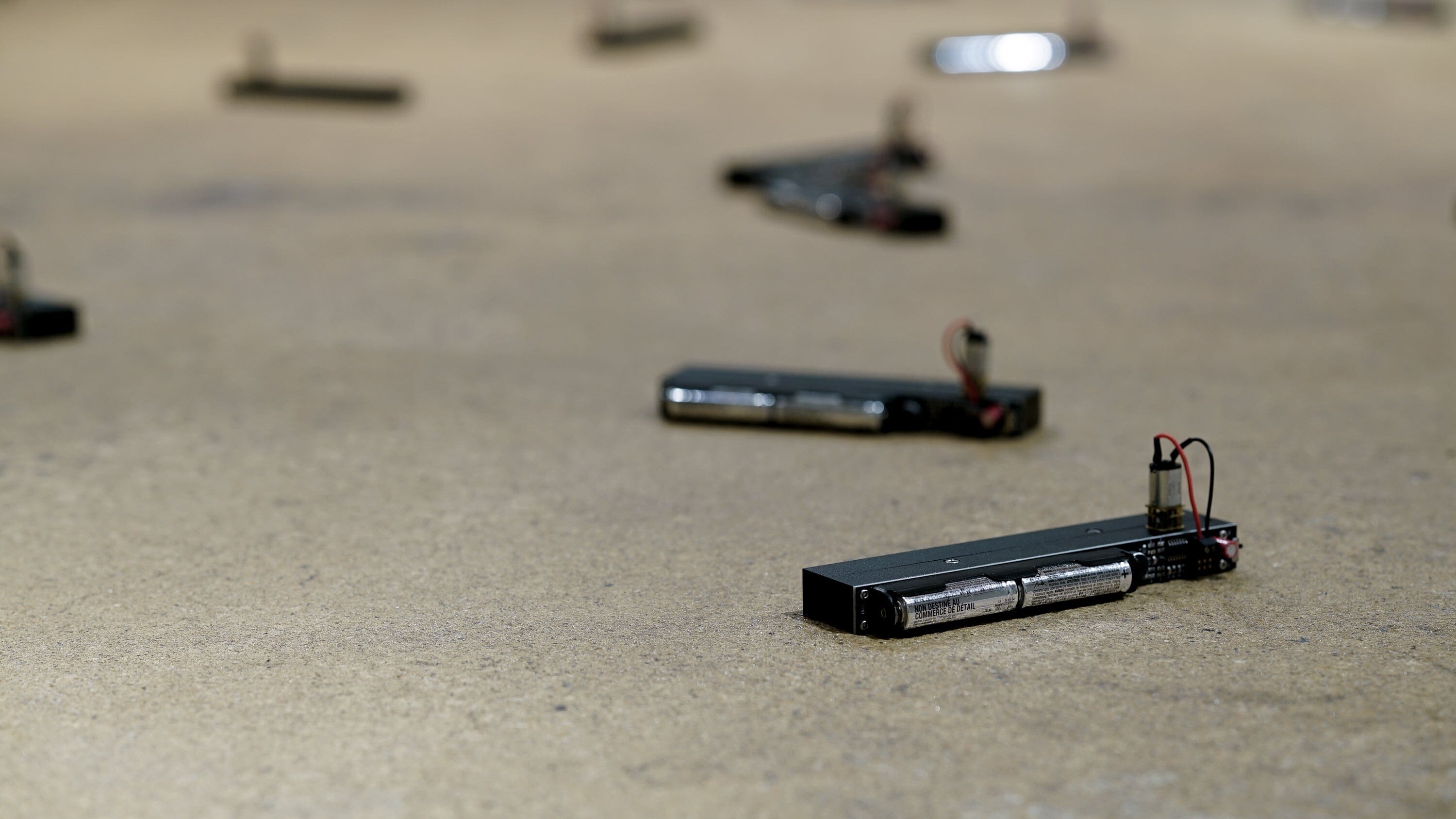

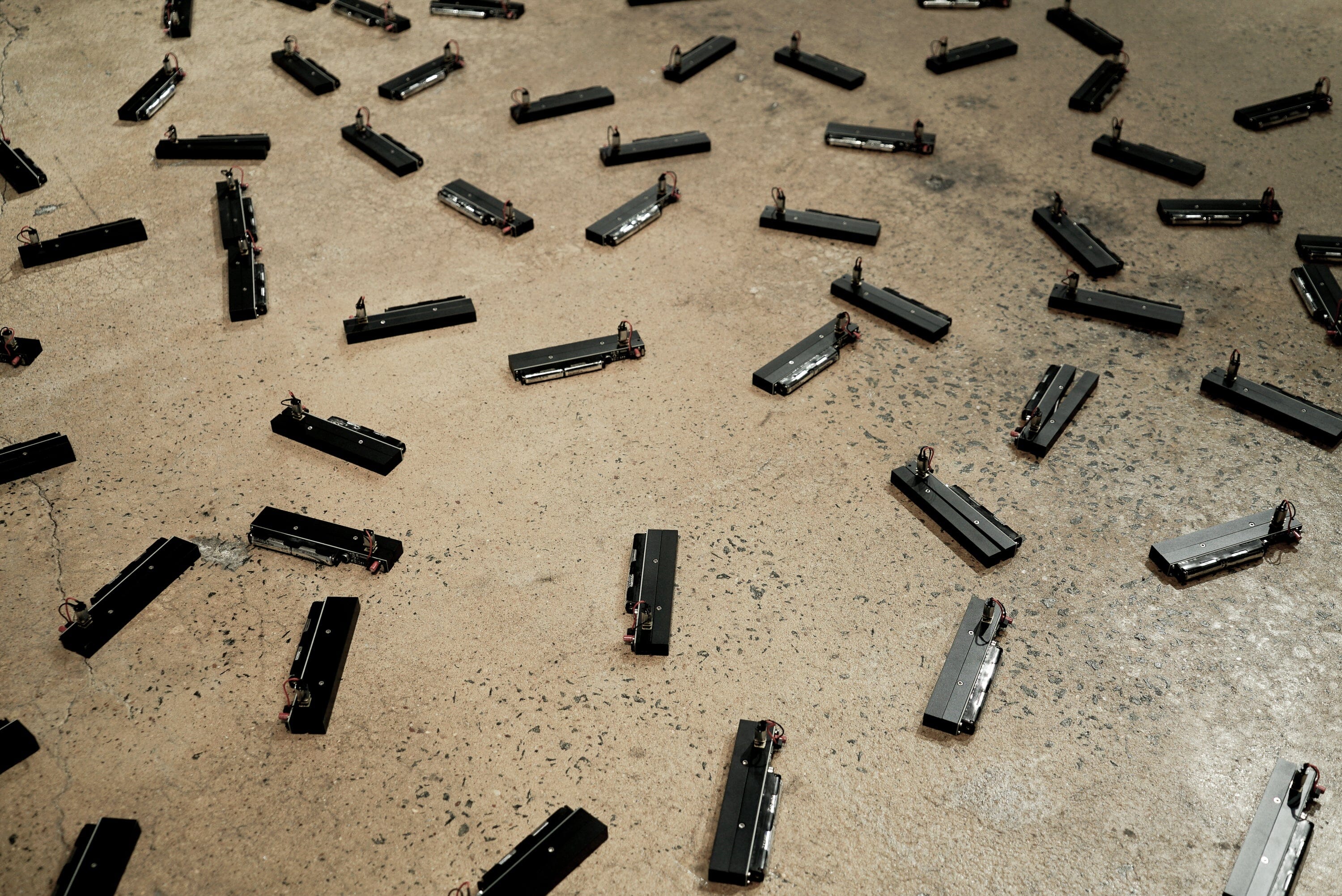
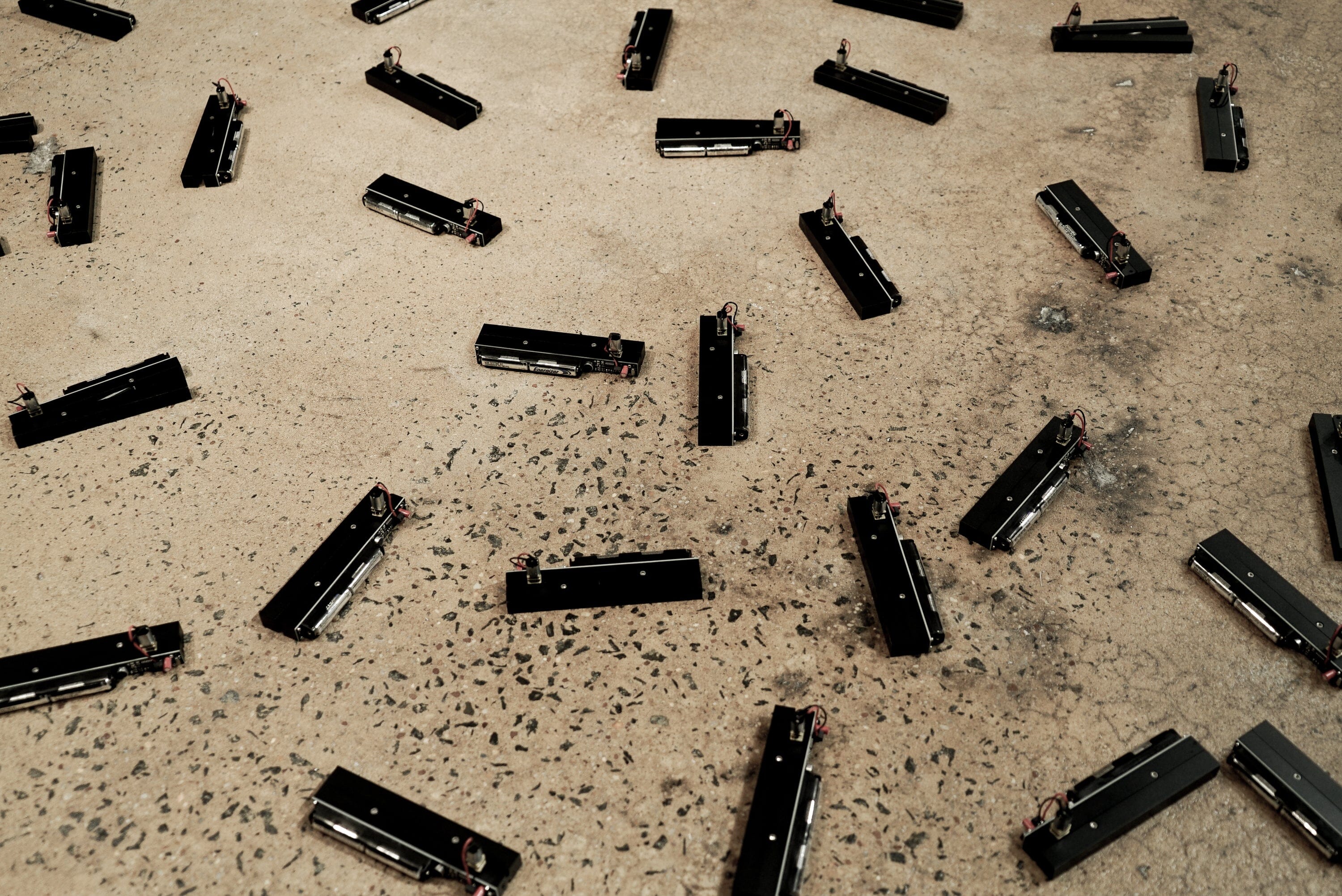
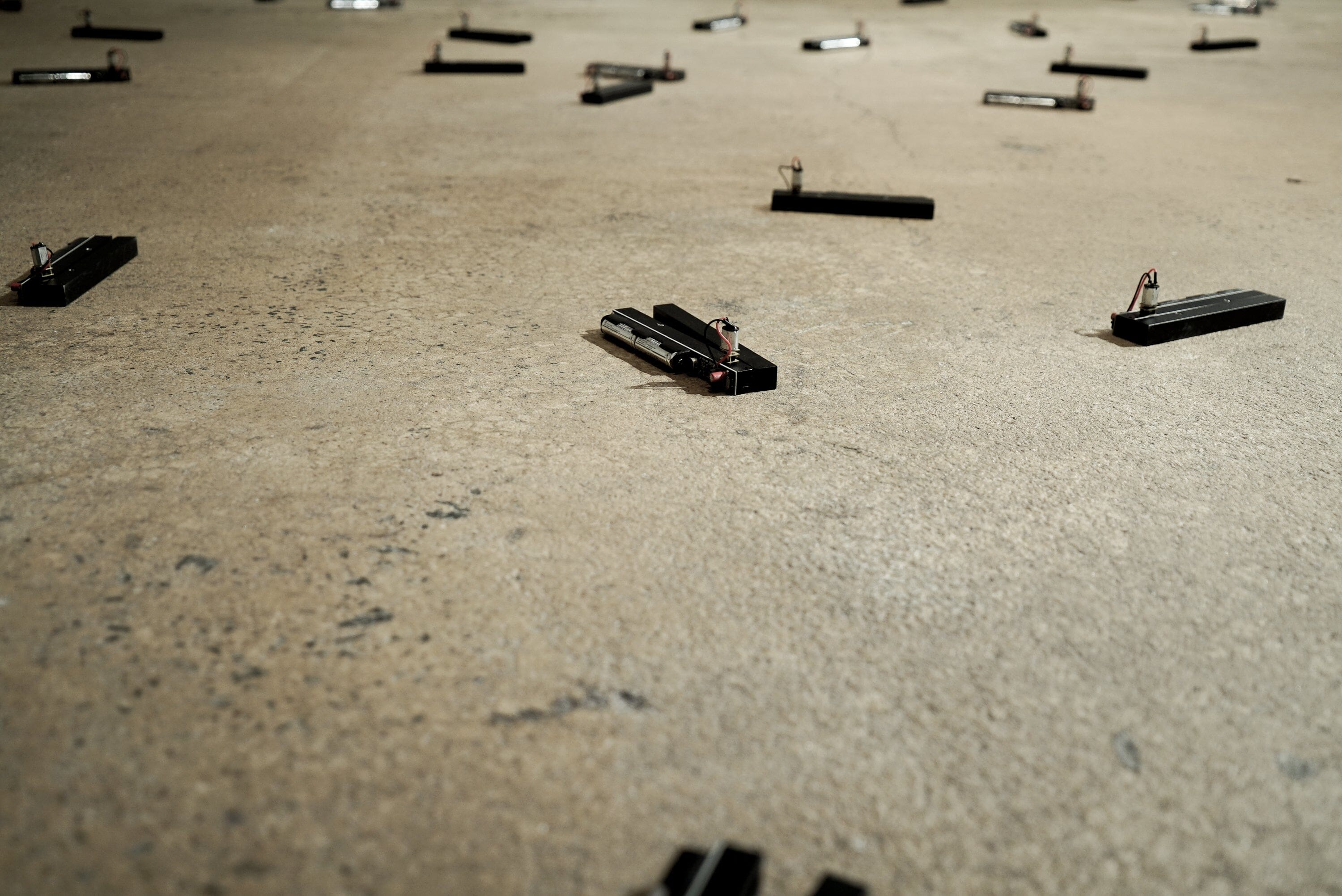

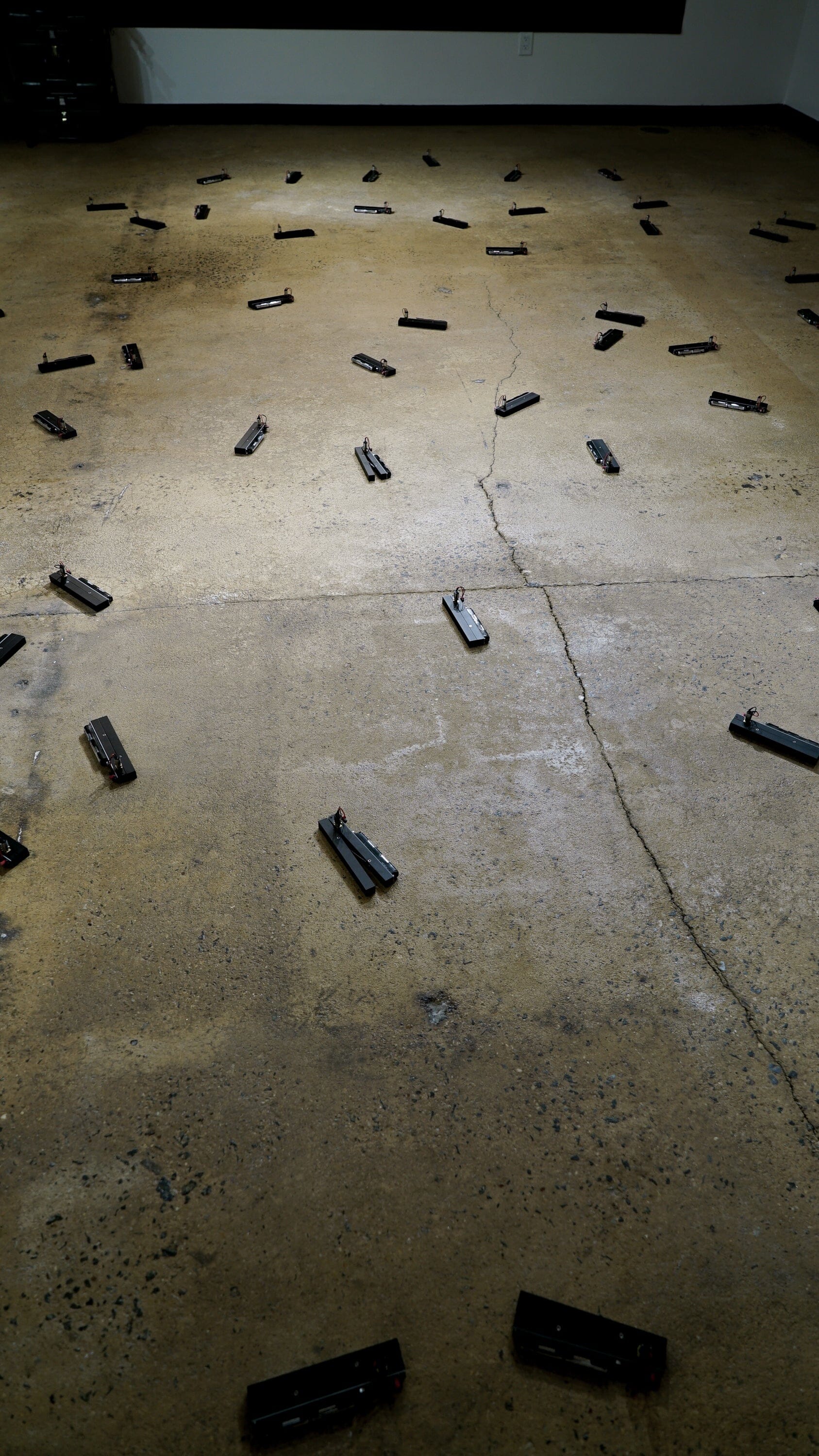
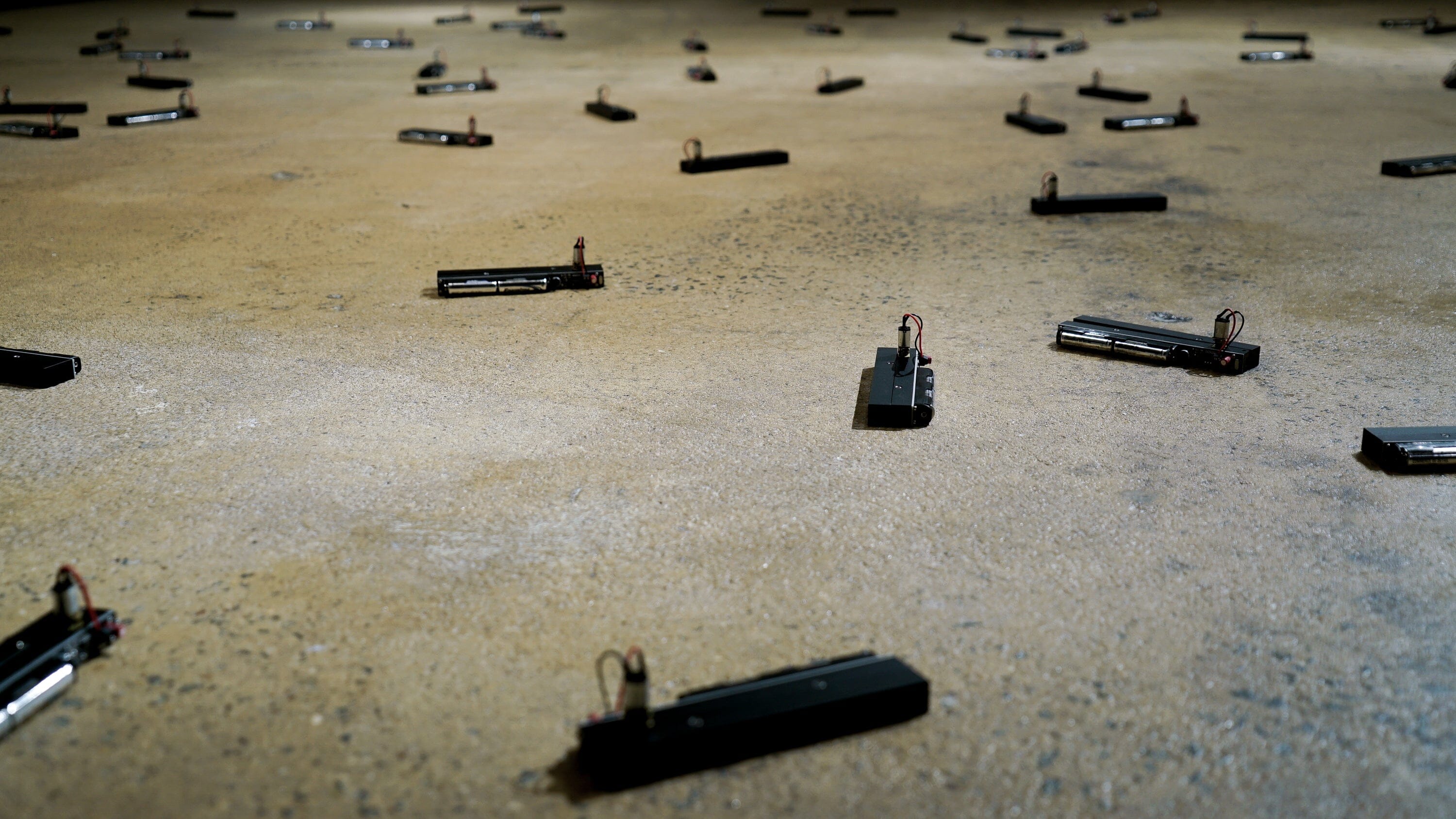
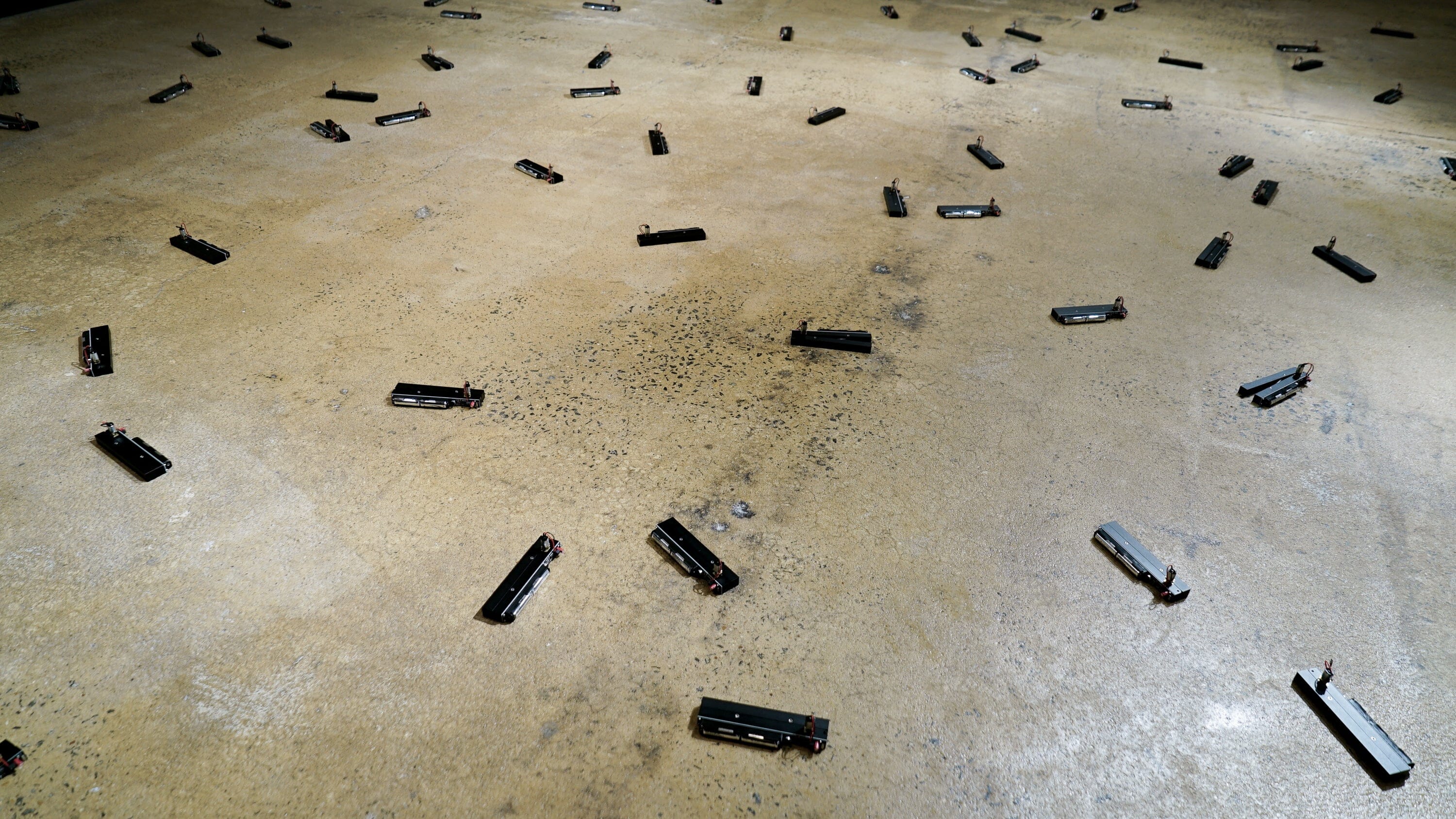
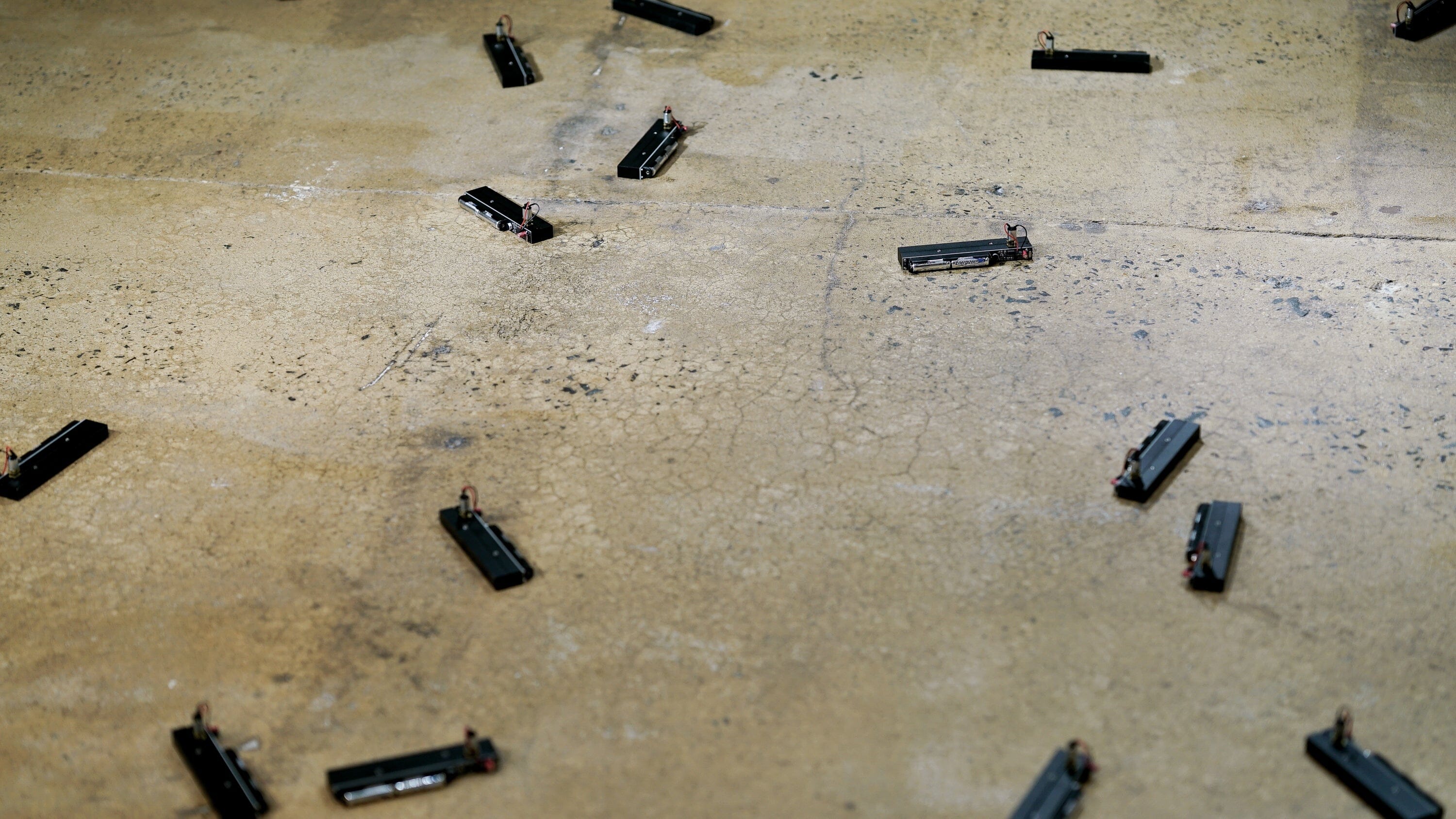
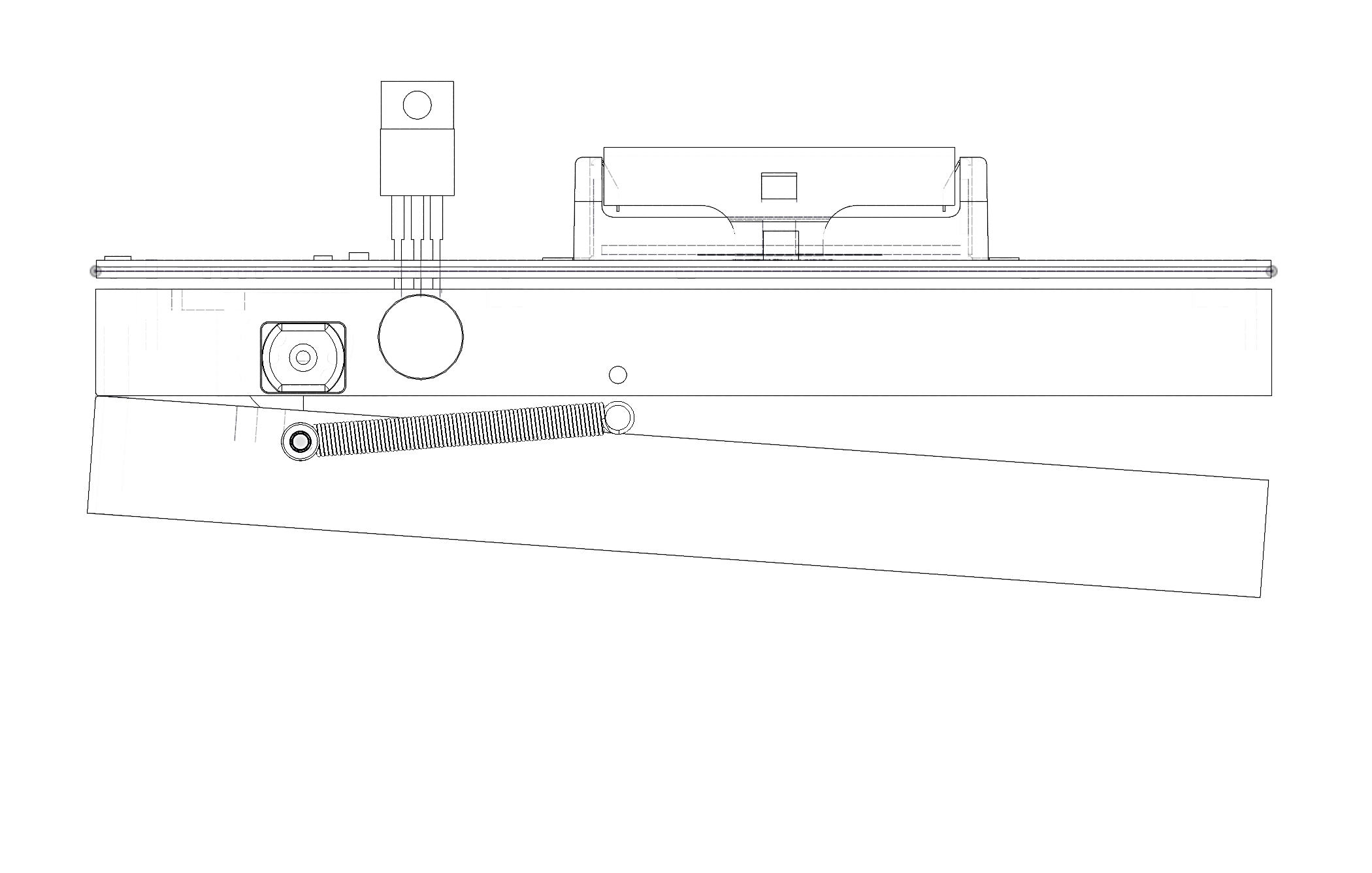
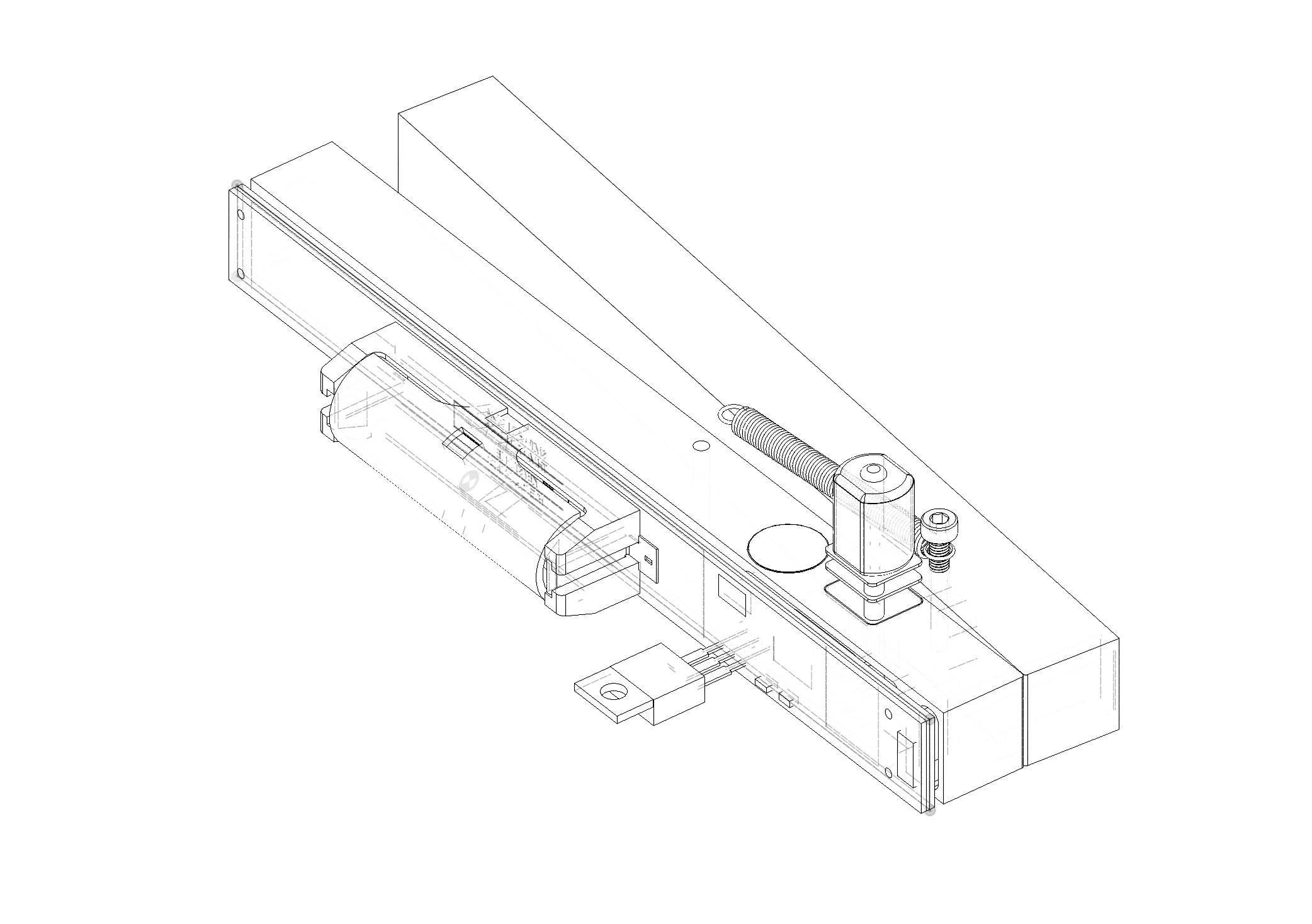

100 Clapping Machines is an indoor installation of a hundred individual clapping machines, sometimes clapping in unison, sometimes seemingly randomly. Visitors are encouraged to interact with the installation by making sounds (clapping or stomping).

Each clapper claps on a time interval, but will also adjust its phase (i.e. time delay) as it listens to match its neighbors' claps, similar to how some species of fireflies synchronize their flashing. Each clapper has a small microcontroller, a piezo (acting as a microphone), a motor with a cam, and a spring to actuate two blocks of aluminum that hit each other to clap.

This project highlights the beauty of and the science of sync. As visitors walk around the installation and disrupt the synchronization of clappers they can see how syncing works and how we can become part of it or become disruptions in the system.
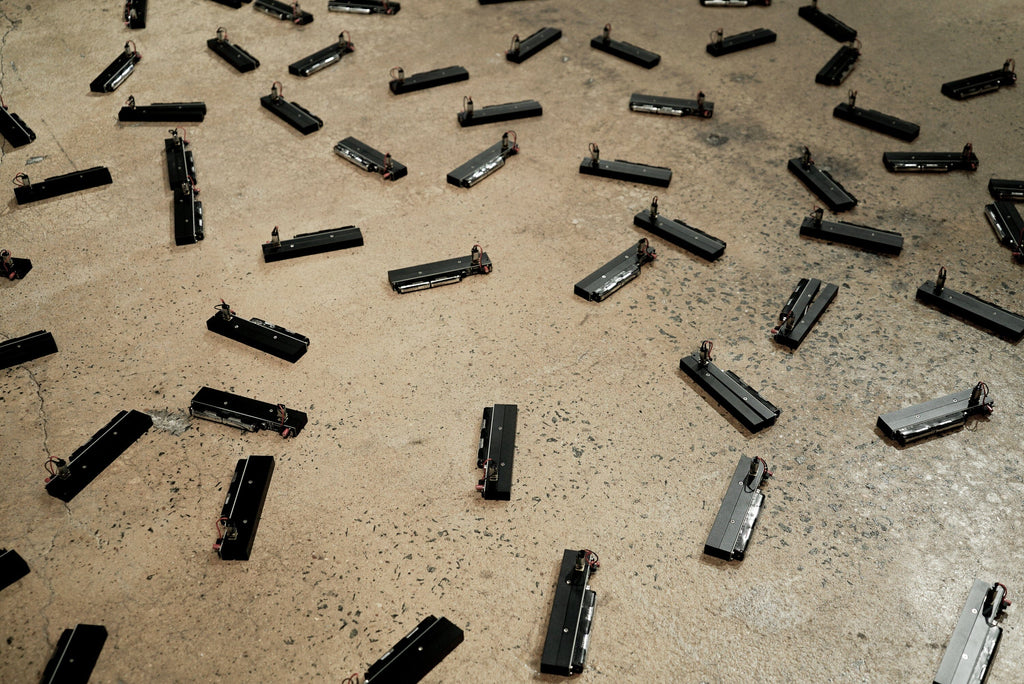
This exhibit was created in collaboration with Helio Takai, and is sponsored by Pratt Institute's STEAMplant Initiative, with additional reception support by the Academic Senate.

Through the installation, visitors from the Pratt community and beyond were able to learn about the science of synchronization and interact with the clappers. Some people sat quietly observing the clapping, others stomped their way through the machines, creating disruptions in the synchronized clapping.

The biggest challenge encountered during the project was developing a robust mechanism and sensing circuit that worked together so each clapper behaved predictably, yet when grouped together, unpredictable behaviors emerged.
With 5-10 clappers in a space, they would synchronize, but in larger groups of 70 or more, the clappers would form clusters of sync, causing them to go in and out of phase. Each clapper is more sensitive to sounds on one side due to the position of the mic on each clapper.
Clappers over time would also rotate and move across the floor, causing even more unpredictable phases of sync.
The the generous support of STEAMplant, we were able to cover the majority of the fabrication costs for the machined metal parts and the electronics.
The clappers were designed and prototyped by Che-Wei Wang with help from Taylor Levy. Helio Takai provided consultation for the design. Josh Levine rewrote the firmware to make the clappers actually work. Colin Lysik assembled clappers.